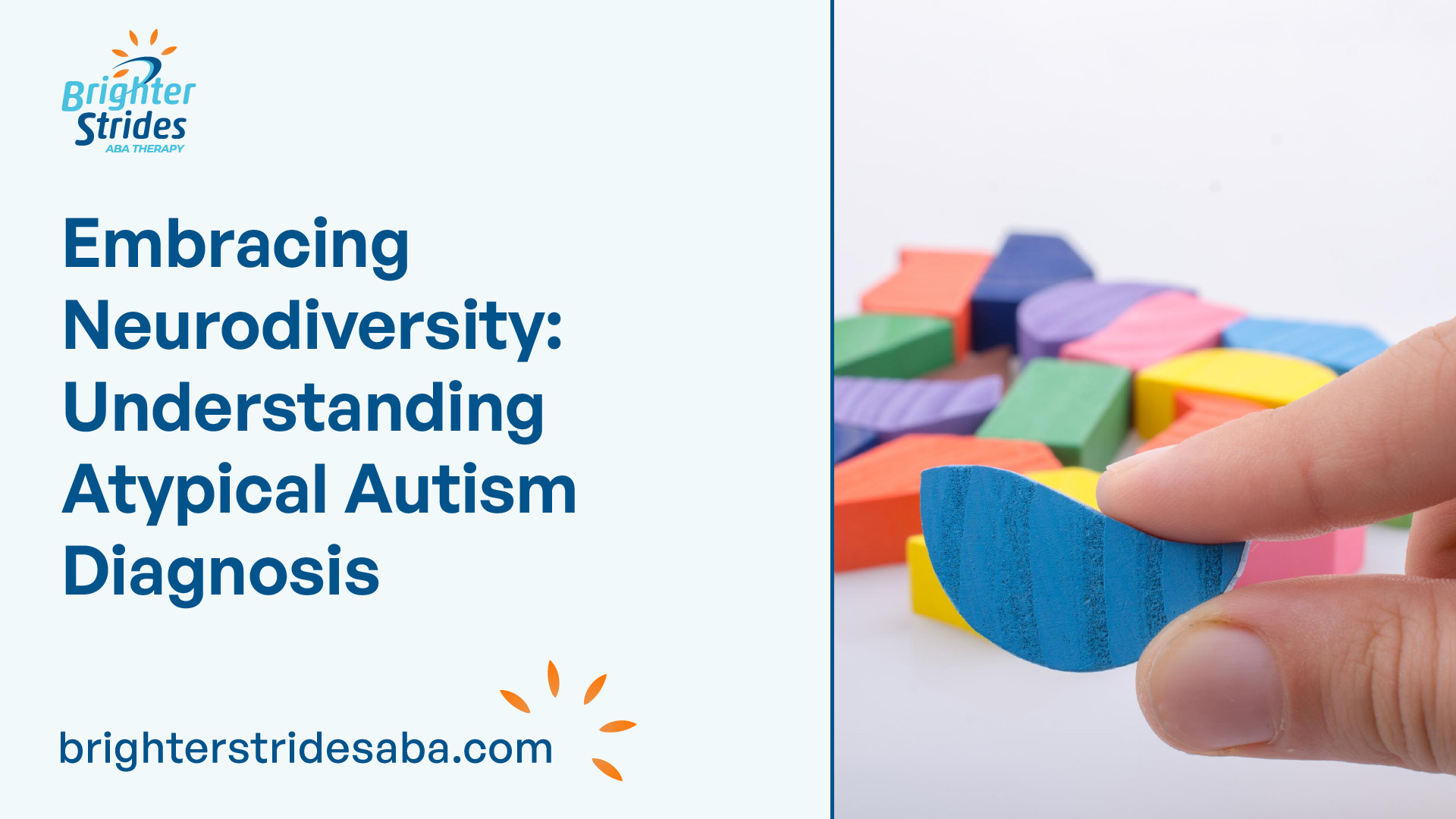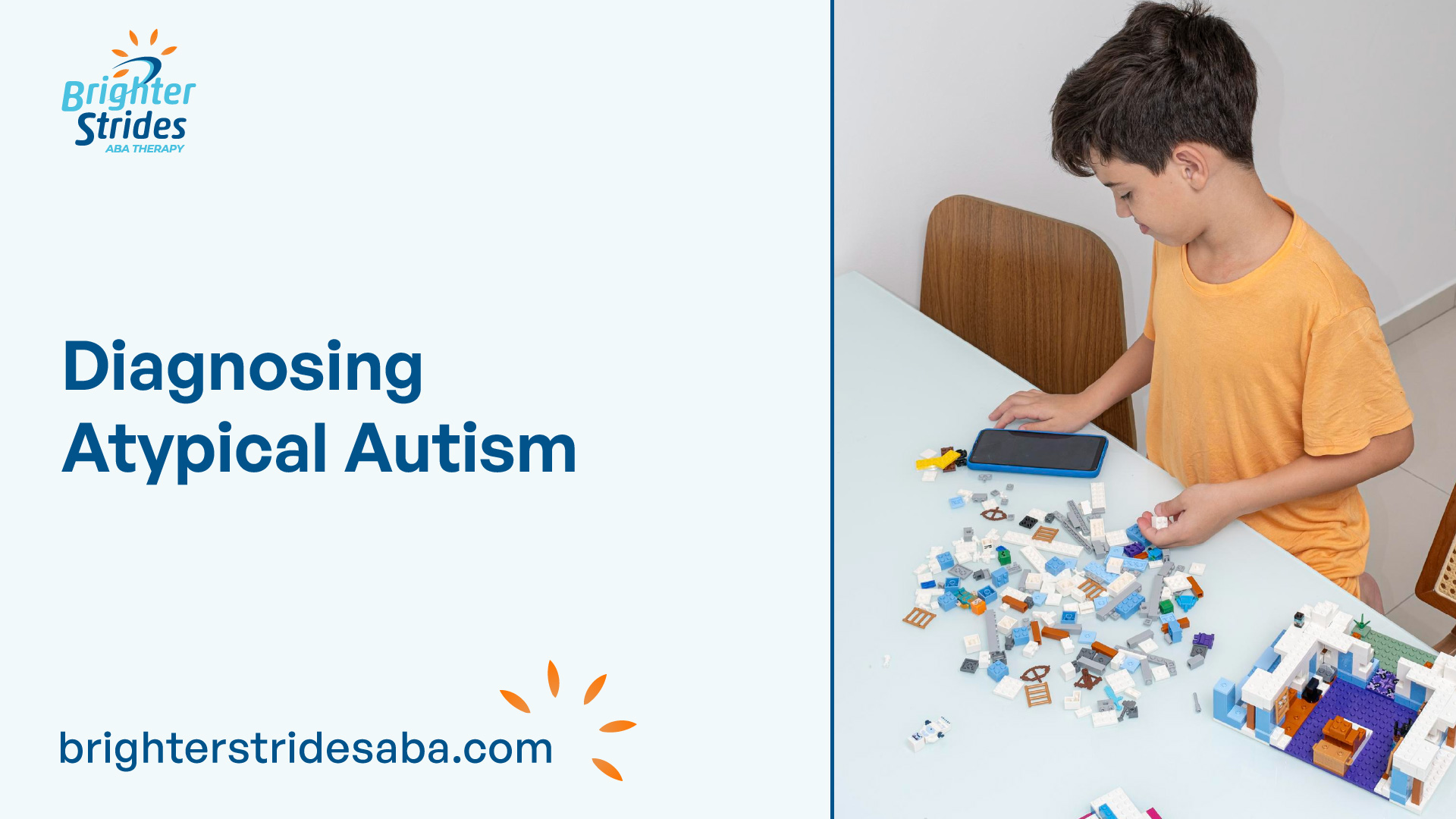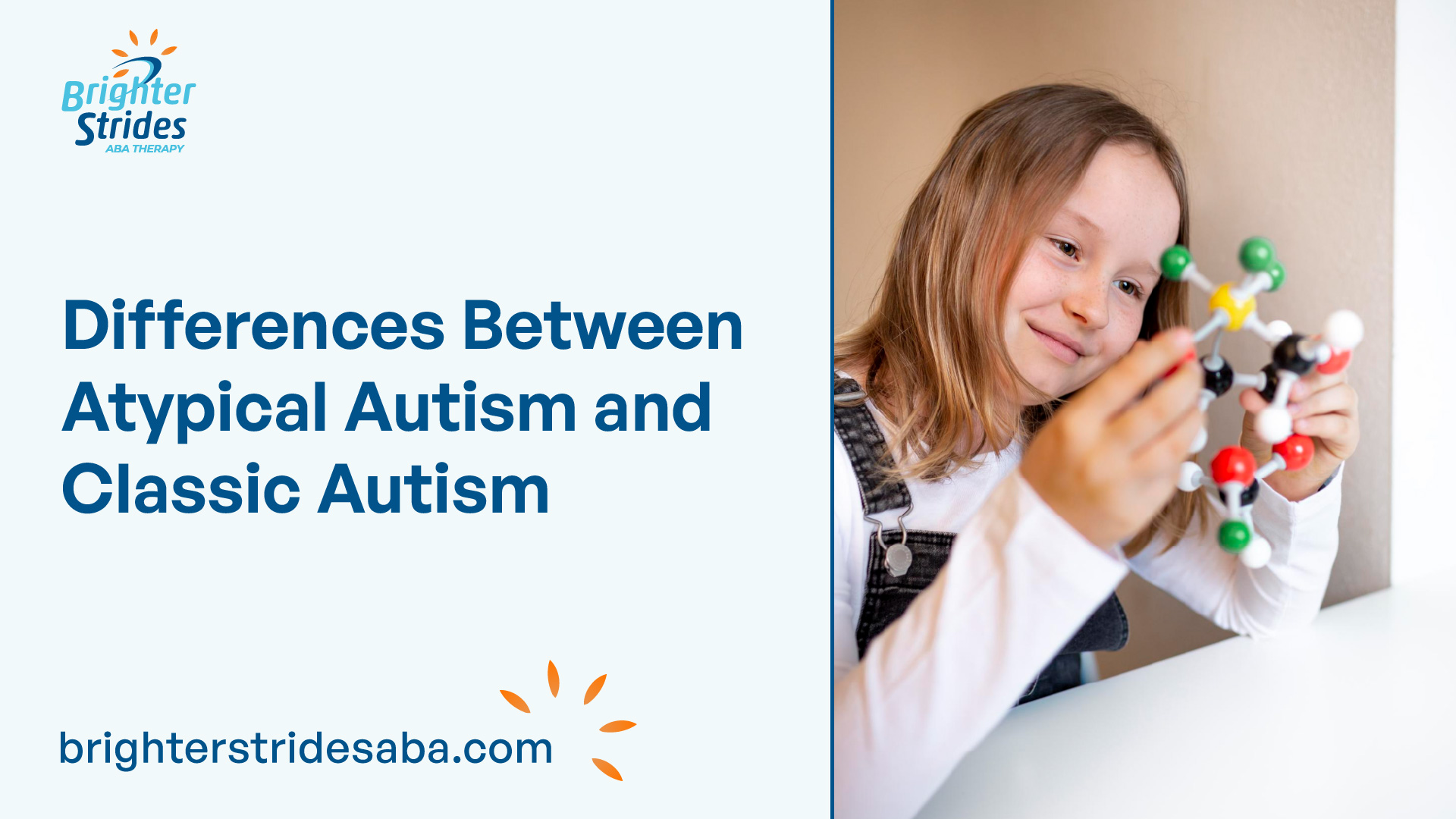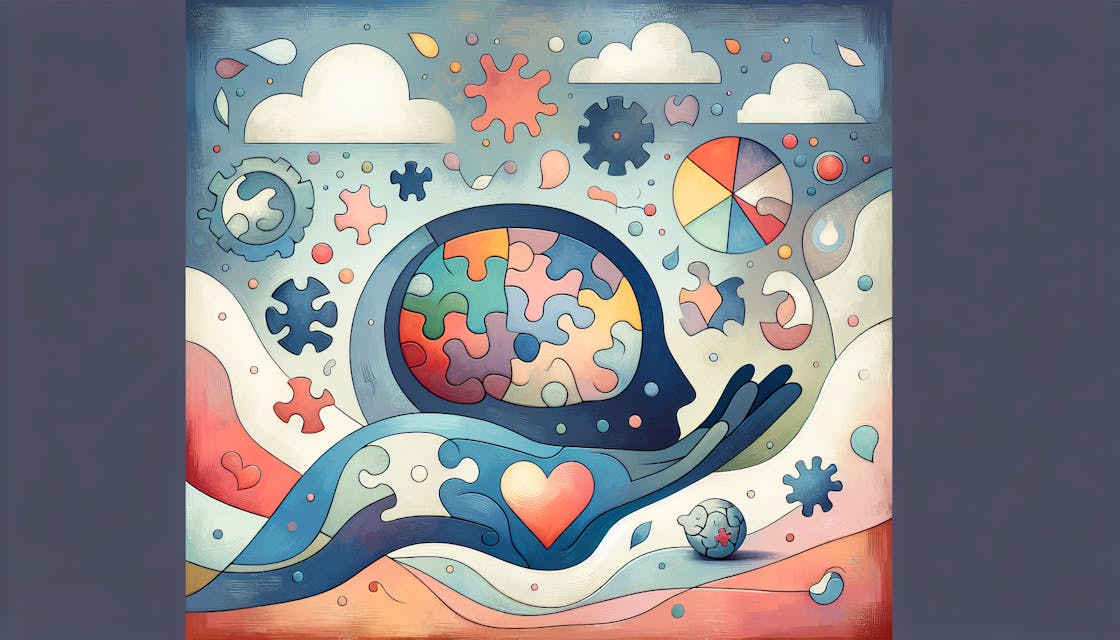
Understanding Atypical Autism
Atypical autism, also known as “Pervasive Developmental Disorder-Not Otherwise Specified (PDD-NOS),” falls under the autism spectrum disorder (ASD) umbrella. It is considered a milder form of autism, and individuals with atypical autism may exhibit some, but not all, of the typical symptoms associated with classic autism.
What is Atypical Autism?
Atypical autism refers to individuals who display a mix of mild to moderate symptoms across the autism spectrum but do not fit into specific diagnostic criteria. It is important to note that atypical autism is not an official diagnostic term but is sometimes used to describe individuals with some autism symptoms who do not meet the full criteria for ASD.
Symptoms of Atypical Autism
The symptoms of atypical autism can vary widely in terms of severity and nature. Individuals with atypical autism may experience challenges in areas such as communication, social interaction, and repetitive behaviors, but these difficulties may not be as pronounced as those seen in classic autism.
It’s important to recognize that each person with atypical autism is unique, and their symptoms may manifest differently. Some common symptoms may include:
- Difficulty with social communication and interaction, such as challenges in understanding nonverbal cues and maintaining eye contact.
- Repetitive behaviors or restricted interests, although these may be less prominent than in classic autism.
- Sensory sensitivities, such as being sensitive to certain sounds, textures, or lights.
- Difficulties with transitions or changes in routine.
- Challenges in understanding and expressing emotions.
It is crucial for individuals with atypical autism to receive appropriate support and interventions tailored to their specific needs, even if they do not meet the full diagnostic criteria for ASD. Early intervention and support can significantly improve outcomes and quality of life for those affected.
Understanding the symptoms and characteristics of atypical autism is an important step in providing the necessary support and resources to individuals with this condition. By recognizing and addressing their unique challenges, we can promote their well-being and help them thrive.

Diagnosing Atypical Autism
Diagnosing atypical autism can be a complex process, as there is no one definitive test or set of criteria for the disorder. Instead, doctors and clinicians rely on a combination of diagnostic tools and assessments to identify atypical autism. However, the challenges in diagnosing atypical autism are often related to the absence of clear empirically-based guidelines for early diagnosis. Let’s explore the challenges and diagnostic criteria associated with atypical autism.
Challenges in Diagnosing Atypical Autism
Diagnosing atypical autism is not always straightforward due to various reasons. Some challenges in the diagnostic process include:
- Heterogeneity of symptoms: Atypical autism is a term used to describe individuals who exhibit some symptoms of autism but do not meet the full criteria for autism spectrum disorder (ASD) [5]. The diverse range of symptoms and their varying severity can make diagnosis more challenging.
- Overlap with other conditions: The symptoms of atypical autism can overlap with other neurodevelopmental disorders, such as attention-deficit/hyperactivity disorder (ADHD), intellectual disability, or social communication disorder. Distinguishing between these conditions requires careful evaluation.
- Developmental variations: Symptoms of atypical autism may not become apparent until later in childhood, making early diagnosis more difficult. The diagnostic process often relies on observing the child’s behavior and developmental milestones over time.
Diagnostic Criteria for Atypical Autism
While atypical autism is not an official diagnostic term, clinicians and healthcare professionals look for certain criteria to assess individuals who may exhibit atypical autism symptoms. The diagnostic criteria for autism spectrum disorder (ASD), as outlined in the Diagnostic and Statistical Manual of Mental Disorders, Fifth Edition (DSM-5), serve as a starting point for evaluation.
The DSM-5 criteria for a diagnosis of autism spectrum disorder require an individual to meet all three of the following categories:
- Persistent deficits in social communication and social interaction: This includes challenges with social-emotional reciprocity, nonverbal communicative behaviors, and developing and maintaining relationships.
- Restricted, repetitive patterns of behavior, interests, or activities: This category encompasses repetitive motor movements, insistence on sameness, highly restricted interests, and sensory sensitivities.
- Symptoms that must be present in the early developmental period: The symptoms should be present in early childhood, even if they may not become fully manifest until social demands exceed limited capacities.
Healthcare professionals may also use other diagnostic tools and assessments, such as the Modified Checklist for Autism in Toddlers (M-CHAT), to aid in the diagnosis of atypical autism [6].
Diagnosing atypical autism requires a comprehensive evaluation by qualified healthcare professionals. It is essential to consider the individual’s unique set of symptoms, developmental history, and behavior patterns to make an accurate diagnosis. Early identification and intervention play a crucial role in supporting individuals with atypical autism and providing them with the appropriate resources and therapies they may need.

Differences Between Atypical Autism and Classic Autism
Understanding the differences between atypical autism and classic autism is essential for a comprehensive understanding of the autism spectrum. Atypical autism, also known as “Pervasive Developmental Disorder-Not Otherwise Specified (PDD-NOS),” falls under the umbrella term of autism spectrum disorder (ASD), representing a milder form of autism.
Characteristics of Classic Autism
Classic autism, as defined in the Diagnostic and Statistical Manual of Mental Disorders, Fifth Edition (DSM-5), is characterized by persistent deficits in social communication and social interaction, restricted, repetitive patterns of behavior, interests, or activities, and the presence of symptoms in the early developmental period [5]. Individuals with classic autism often experience challenges in the following areas:
- Social Communication: Difficulties in social interactions, such as initiating and maintaining conversations, understanding non-verbal cues, and engaging in reciprocal communication.
- Social Interaction: Impaired social interactions and challenges in developing and maintaining relationships with peers.
- Restricted and Repetitive Behaviors: Engaging in repetitive movements or actions, having specific interests, and following strict routines. These behaviors may manifest as repetitive hand-flapping, rocking, or fixations on specific objects or topics.
- Sensory Sensitivities: Heightened sensitivities to sensory stimuli, such as sounds, lights, textures, or tastes.
Characteristics of Atypical Autism
Atypical autism, on the other hand, presents with a mix of mild to moderate symptoms across the autism spectrum, making it challenging for individuals to fit into specific diagnostic criteria. Some individuals with atypical autism may exhibit some, but not all, of the typical symptoms associated with classic autism. The characteristics of atypical autism include:
- Social Communication and Interaction: Difficulties in social interactions and communication, although the severity may vary. Individuals may struggle with understanding social cues, initiating or maintaining conversations, or developing meaningful relationships.
- Repetitive Behaviors: Engagement in repetitive behaviors, albeit they may be less frequent or intense compared to classic autism. These behaviors can include repetitive hand movements, specific routines, or intense interests in certain subjects.
- Language Development: Delays or challenges in language development, such as delayed speech or difficulty with expressive language skills. However, individuals with atypical autism may have better language abilities compared to those with classic autism.
- Sensory Sensitivities: Sensory sensitivities, similar to classic autism, where certain sensory stimuli may be overwhelming or cause distress.
It’s important to note that the presentation of atypical autism can vary widely in terms of severity and nature. Each individual with atypical autism may have unique strengths, challenges, and needs, requiring personalized support and interventions to thrive. Proper diagnosis and understanding of these differences are crucial for accessing appropriate interventions and therapies to support individuals with atypical autism on their journey towards growth and development.
Early Intervention and Support for Atypical Autism
When it comes to atypical autism, early intervention and appropriate support play a crucial role in improving outcomes and enhancing the lives of individuals affected by this condition. Timely diagnosis and intervention are essential for providing the most effective therapies and treatments tailored to the unique needs of individuals with atypical autism.
Importance of Early Intervention
Accurate diagnosis of atypical autism in early childhood is vital for targeting timely and effective treatments, leading to successful adaptive and social growth. Early intervention allows for the implementation of strategies and therapies that can address the specific challenges faced by individuals with atypical autism.
Research suggests that early accurate identification of autism spectrum disorder (ASD) is associated with better prognosis and improved outcomes in cognition, language, and adaptive behavior. Early intervention provides an opportunity to address core symptoms, such as difficulties with social interactions, communication skills, and challenging behaviors, helping individuals with atypical autism lead fulfilling lives [8].
Therapies and Treatments for Atypical Autism
Early intervention for atypical autism involves a range of therapies and treatments tailored to the individual’s specific needs. These interventions aim to improve social interactions, communication skills, and address challenging behaviors. Some commonly used therapies include:
- Applied Behavior Analysis (ABA): ABA is a widely recognized therapy that focuses on behavior modification. It uses positive reinforcement and structured intervention strategies to teach new skills and reduce problematic behaviors.
- Speech and Language Therapy: This therapy targets communication difficulties and helps individuals with atypical autism develop their language skills, improve articulation, and enhance social communication.
- Occupational Therapy (OT): OT focuses on improving fine motor skills, sensory integration, and daily living skills. It helps individuals with atypical autism develop independence and better navigate their environment.
- Social Skills Training: This therapy aims to enhance social interactions and teach individuals with atypical autism appropriate social behaviors, such as turn-taking, initiating and maintaining conversations, and understanding nonverbal cues.
- Cognitive Behavioral Therapy (CBT): CBT helps individuals with atypical autism develop coping strategies to manage anxiety, stress, and challenging behaviors. It focuses on identifying and modifying negative thought patterns and behaviors.
The specific therapies and treatments recommended will depend on the individual’s needs and strengths. It is crucial to consult with professionals experienced in working with individuals with atypical autism to develop a personalized treatment plan.
Early intervention and individualized treatment plans are essential for individuals with atypical autism. By targeting specific challenges and providing appropriate support, early intervention can enhance overall quality of life and improve outcomes for those with atypical autism. It is important to remember that each individual with atypical autism is unique, and a comprehensive approach that considers their strengths and challenges should be taken to provide the best support and intervention.
Living with Atypical Autism
Living with atypical autism can present unique challenges, but with the right coping strategies, techniques, and support, individuals with atypical autism can lead fulfilling lives.
Coping Strategies and Techniques
Developing effective coping strategies and techniques can greatly assist individuals with atypical autism in managing daily challenges. Here are some strategies that can be beneficial:
- Routine and Structure: Establishing a consistent daily routine can provide a sense of stability and predictability, which can help individuals with atypical autism navigate their daily activities more comfortably.
- Visual Supports: Visual supports, such as visual schedules, social stories, and visual cues, can aid in promoting understanding, reducing anxiety, and improving communication skills.
- Sensory Regulation: Sensory sensitivities are common in individuals with atypical autism. Identifying sensory triggers and incorporating sensory regulation techniques, such as deep pressure activities or sensory breaks, can help manage sensory overload.
- Social Skills Training: Social interactions can be challenging for individuals with atypical autism. Social skills training programs can help develop social communication skills, enhance social understanding, and improve relationships with others.
- Self-Calming Strategies: Teaching and practicing self-calming techniques, such as deep breathing exercises or using sensory tools, can assist individuals in managing anxiety or emotional distress.
Support for Individuals with Atypical Autism
Support from family, caregivers, educators, and the community plays a vital role in the well-being of individuals with atypical autism. Here are some forms of support that can be beneficial:
- Education and Advocacy: Parents and caregivers can advocate for appropriate educational services and accommodations tailored to the specific needs of individuals with atypical autism. This can include individualized education plans (IEPs), specialized classrooms, or additional support from educators.
- Therapy and Interventions: Early intervention and individualized treatment plans are crucial for individuals with atypical autism. Therapies such as applied behavior analysis (ABA), speech therapy, occupational therapy, and social skills training can help address specific needs and enhance overall quality of life.
- Community Resources: Connecting with local support groups, autism organizations, or online communities can provide individuals with atypical autism and their families a network of understanding and guidance. These resources can offer valuable information, advice, and a sense of belonging.
- Transition Planning: As individuals with atypical autism transition into adulthood, support in areas such as employment, independent living skills, and vocational training can help them navigate the challenges of adulthood successfully.
By implementing coping strategies, accessing appropriate support, and fostering a supportive environment, individuals with atypical autism can thrive and lead meaningful lives. It is important to recognize and celebrate their unique strengths and abilities while providing them with the necessary tools and resources to overcome challenges.
Atypical Autism: Research and Progress
As research on atypical autism continues to advance, there have been significant developments in understanding the prevalence, characteristics, and effective interventions for individuals with this diagnosis.
Prevalence and Understanding of Atypical Autism
Over time, there has been an increased prevalence and understanding of atypical autism, leading to more tailored and effective support systems for individuals falling within this diagnostic category [1]. Atypical autism refers to individuals who display some characteristics of autism spectrum disorder (ASD), but not all the criteria necessary for a classic autism diagnosis.
Although the specific prevalence rates of atypical autism are not widely reported, it is recognized that atypical autism falls under the broader umbrella of ASD. According to recent research, the prevalence of ASD has been estimated to be around 1 in 54 children in the United States. While the exact prevalence of atypical autism within this broader category is not known, it is clear that there is a significant number of individuals who exhibit atypical autism traits.
Advancements in research have led to a better understanding of the unique characteristics and challenges faced by individuals with atypical autism. The diagnosis of atypical autism can sometimes be complicated due to overlapping symptoms with other conditions like intellectual disabilities, specific language impairments, or attention-deficit/hyperactivity disorder (ADHD). However, efforts are being made to refine diagnostic criteria and improve the accuracy of assessments.
Advances in Diagnosis and Treatment
Recent advances in clinical research have made it possible to diagnose autism spectrum disorders (ASD) as early as the second year of life. Early diagnosis is crucial for providing timely interventions and support. Diagnosis in very young children can be complex due to the variation in presentation compared to older children with autism. However, with the help of observational screening tools that measure a child’s social and cognitive abilities, diagnosis at a young age has become more feasible. The two main tools used in the diagnosis of ASD are DSM-5 and M-CHAT.
Early intervention and appropriate therapies can significantly improve outcomes for individuals with atypical autism. Therapies that focus on improving social interactions, communication skills, and addressing challenging behaviors can be beneficial in helping individuals with atypical autism lead fulfilling lives. Applied Behavior Analysis (ABA), speech therapy, occupational therapy, and social skills training are some of the interventions commonly used to support individuals with atypical autism.
As research in the field progresses, there is ongoing exploration of new approaches and interventions to further enhance the quality of life for individuals with atypical autism. Promising areas of research include investigating the genetic and neurobiological underpinnings of atypical autism, evaluating the effectiveness of innovative therapies, and developing strategies to improve social inclusion and community support.
By continuing to advance our understanding and knowledge of atypical autism, we can strive to provide the best possible support and resources for individuals with this diagnosis, enabling them to thrive and reach their full potential.
Atypical Autism: Looking Ahead
As the understanding of atypical autism continues to evolve, researchers and professionals are actively exploring various areas to improve diagnosis, treatment, and support for individuals with atypical autism. The future holds promising developments that can enhance the lives of those affected by this condition.
Promising Areas of Research
Research in atypical autism is focused on several key areas, aiming to deepen our understanding and broaden the available interventions. Some promising areas of research include:
- Early Identification and Diagnosis: Early diagnosis of atypical autism is crucial for ensuring individuals receive appropriate interventions and support. Ongoing research aims to refine diagnostic tools and improve early identification methods. Advances in clinical research have already made it possible to diagnose autism spectrum disorders (ASD) as early as the second year of life. Early accurate identification is associated with better prognosis and improved outcomes in cognition, language, and adaptive behavior.
- Tailored Interventions: Tailoring interventions to meet the specific needs of individuals with atypical autism is a key focus of research. By developing personalized and evidence-based interventions, researchers aim to improve outcomes in areas such as social interactions, communication skills, and challenging behaviors. This research emphasizes the importance of early intervention and appropriate therapies to enhance the quality of life for individuals with atypical autism.
Future Directions in Atypical Autism
Moving forward, there are several directions in which research and practice in atypical autism are expected to progress. Some important future directions include:
- Advancing Screening and Assessment Techniques: Improving the accuracy and efficiency of screening and assessment tools is a priority. Researchers are working on developing innovative methods to identify atypical autism traits, enabling earlier and more accurate diagnoses. By refining these techniques, healthcare professionals can provide timely interventions and support.
- Enhancing Therapeutic Approaches: Further advancements in therapeutic approaches are anticipated. Researchers are exploring new interventions and refining existing ones to address the unique challenges faced by individuals with atypical autism. These interventions may include novel behavioral therapies, technological interventions, and alternative approaches that promote communication, social skills, and overall well-being.
- Increasing Accessibility to Services and Support: Efforts are being made to ensure that individuals with atypical autism have access to appropriate services and support. Researchers and advocates are working towards improving the availability and affordability of interventions, creating inclusive educational environments, and establishing comprehensive support systems for individuals and their families.
As research progresses and new discoveries are made, the understanding and support for individuals with atypical autism will continue to evolve. These promising areas of research and future directions hold great potential for enhancing the lives of those with atypical autism, enabling them to reach their full potential and thrive within their unique strengths and abilities.
References
- https://www.goldencaretherapy.com/atypical-autism/
- https://www.autismspeaks.org/autism-diagnosis-criteria-dsm-5
- https://www.abtaba.com/blog/atypical-autism
- https://www.ncbi.nlm.nih.gov/pmc/articles/PMC4878115/
- https://www.cdc.gov/ncbddd/autism/hcp-screening.html
- https://www.ncbi.nlm.nih.gov/books/NBK573609/
- https://www.ncbi.nlm.nih.gov/pmc/articles/PMC8654688/
- https://www.verywellhealth.com/what-is-atypical-autism-260551
- https://www.autismparentingmagazine.com/atypical-autism/
- https://www.cdc.gov/ncbddd/autism/data.html

 We've just released an article! Check out our blog!
We've just released an article! Check out our blog! 


